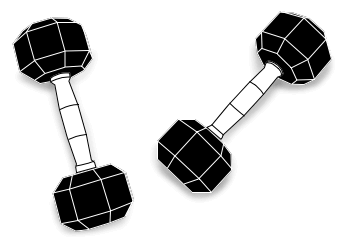Gratitude is powerful. It's a transformative emotion that's been revered by cultures across the globe for centuries. Beyond its cultural and spiritual significance, science has delved into the study of what being thankful really does for our body and mind—uncovering its profound impact on mental, emotional and physical well-being. It's linked to everything from happiness and life satisfaction to less anxiety and depression.

But what are we talking about when we say “gratitude”? Most people have an instinctive understanding of what gratitude is, but it can be surprisingly difficult to define. Is it an emotion? A virtue? A behavior? Indeed, gratitude can mean different things to different people in different contexts. In its simplest form, gratitude refers to a state of thankfulness. And researchers at UC Berkley suggest (PDF) that gratitude is not simply a cultural construct. They found it has deep roots that are embedded in our evolutionary history, our brains and DNA.
Psychologists from Yale found that gratitude is critical for happiness. They point to research that finds grateful people tend to be happier. This research also makes historical sense. Gratitude is in the texts of all major religions, and philosophers have long opined about its importance. The revered Roman philosopher Cicero famously said gratitude “is not only the greatest, but is also the parent of all the other virtues.”
But, despite all this, being grateful just isn't our default setting, is it? If it were, we probably wouldn't need all the reminders. But there's a scientific explanation for this, as well. The “hedonic treadmill” is a hypothesis that the American Psychological Association says that for better or worse, “people's happiness tends to return to a preexisting baseline level after positive or negative life events have occurred.” In other words, we eventually adapt to our surroundings, so any situation becomes “normal” no matter how good we currently have it. We downshift into everyday mode.
Advertisement
That's why it's important to search and savor things for which to be grateful. Robert Emmons, professor of psychology at the University of California, defines gratitude as having two parts. The first is an affirmation of goodness: People can learn to notice the gifts they have received. The second part is recognizing that the source of this goodness rests outside of oneself—that we often receive it from other people, and sometimes from a higher power, fate or the natural world. In other words, gratitude helps people realize that they wouldn't be where they are without the help of others. And that's a good state in which to find yourself.
Typically, humans are more cognitively aware of the barriers they face (call them “headwinds”) than the benefits they receive (or “tailwinds”). By paying more attention to our tailwinds, studies have shown that we can accentuate feelings of happiness, optimism and positive emotion. “Strengthening your positive recall bias makes it easier to see the good things around you even when times are dark,” says Nancy Davis Kho, in her book, The Thank-You Project. For that project, she wrote gratitude letters to 50 individuals in her life.

Ruled linen journal,
$28 by Shinola
And you've no doubt heard of the practice of gratitude journaling. The goal with that is to help open your eyes to the tailwinds in your life. By being more conscious of the things you're grateful for, you'll see the world in a whole new perspective. And those who are practicing gratitude tend to have fewer health complaints and sleep problems. That alone is worth scratching out a few journal entries, right? But Michael Easter, author of Scarcity Brain, says we may have to go even further. He says we have more of everything these days. “The best path to gratitude is to occasionally force yourself into scarcity.” This is supported not just by modern research but by ancient wisdom too. “This is why religions have practices like Lent and Ramadan.” Only when you go without can you realize how great it is to have and just how much of the modern world is undeniably amazing. “That might be time in the wilderness, totally removed from modern comforts,” he says. “Or it could be picking a comfort or two and going without for a while. When we get those things back, we can truly experience how wonderful they are.”
It's compelling evidence for the transformative power of this emotion on our mental, emotional, and physical health, don't you think? As research continues to unfold, integrating gratitude practices into daily life seems like the secret sauce for cultivating a positive and resilient mindset. And we're grateful for that.
Express Gratitude
to Others
Take the time to express appreciation to friends, family or colleagues. Verbalizing gratitude strengthens relationships and creates a positive social environment.
Advertisement
































